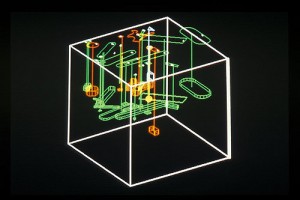Fire Triangle
The widely known ''Fire Triangle'' shows the three necessary components required to support combustion: Fuel, Oxygen and Ignition source. All three elements must be present in order to support combustion. What the triangle does not show is that both fuel and oxygen have to be mixed in the relevant proportion in order to burn.
Picture 1 - Fire Triangle
A combustible mixture can only be produced within a limited band of gas/air concentration. This band is unique for each gas and vapor and is characterized by an upper level, characterized as the Upper Explosive Level (UEL) and a lower level, known as Lower Explosive Level (LEL). These values are also sometimes referred to as the lower and upper flammability limits (LFL and UFL respectively).
At concentration levels below the LEL, there is not enough fuel (gas) to initiate an explosion and the gas/air mixture is ''poor''. At concentration levels above UEL, there is not enough oxygen and the gas/air mixture is ''rich''.
The flammable range falls between the limits of the LEL and UEL for every specific gas or mixture of gases. An increase in pressure, temperature or oxygen content will usually broaden the flammability range.
Typical flammability levels of some gases
| Fuel | Lower Explosive Limit (LEL) (% volume in air) | Upper Explosive Limit (UEL) (% volume in air) |
| Methane | 5.0 | 15.0 |
| Butane | 1.6 | 8.4 |
| Propane | 2.1 | 9.6 |
| Ethanol | 3.3 | 19.0 |
| Gasoline (100 Octane) | 1.4 | 7.8 |
| Isopropyl Alcochol | 2.0 | 12.7 |
| Ethyl Ether | 1.9 | 36.0 |
| Xylene | 0.9 | 7.0 |
| Toluene | 1.0 | 7.1 |
| Hydrogen | 4.0 | 75.0 |
| Acetylene | 2.5 | 85.0 |
It is self-evident that for safety reasons, use of any gas detection systems will have to be set so as to detect levels from zero percent of gas concentration up to the LEL. By the time this concentration is reached, shut-down procedures or facility evacuation should have been put in place. However, this will typically take place at a concentration usually less than 50% of the LEL so that adequate safety margin and time is provided.
Special attention needs to be taken at enclosed or not properly ventilated spaces/enclosures. At such places, a concentration higher than the UEL is possible to occur.Therefore, extreme vigilance and attention is required at times of inspection of such spaces, since merely the opening of a door or a hatch will force air to the inspected enclosure which could dilute the gases to a hazardous, combustible mixture.





